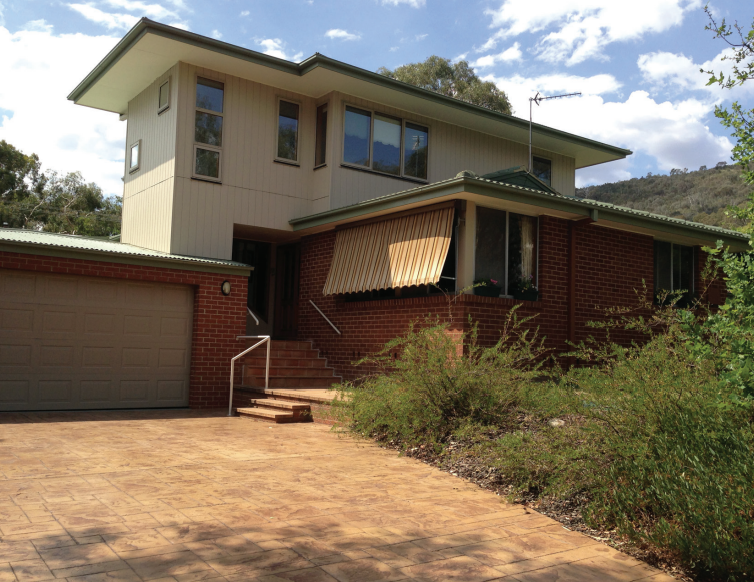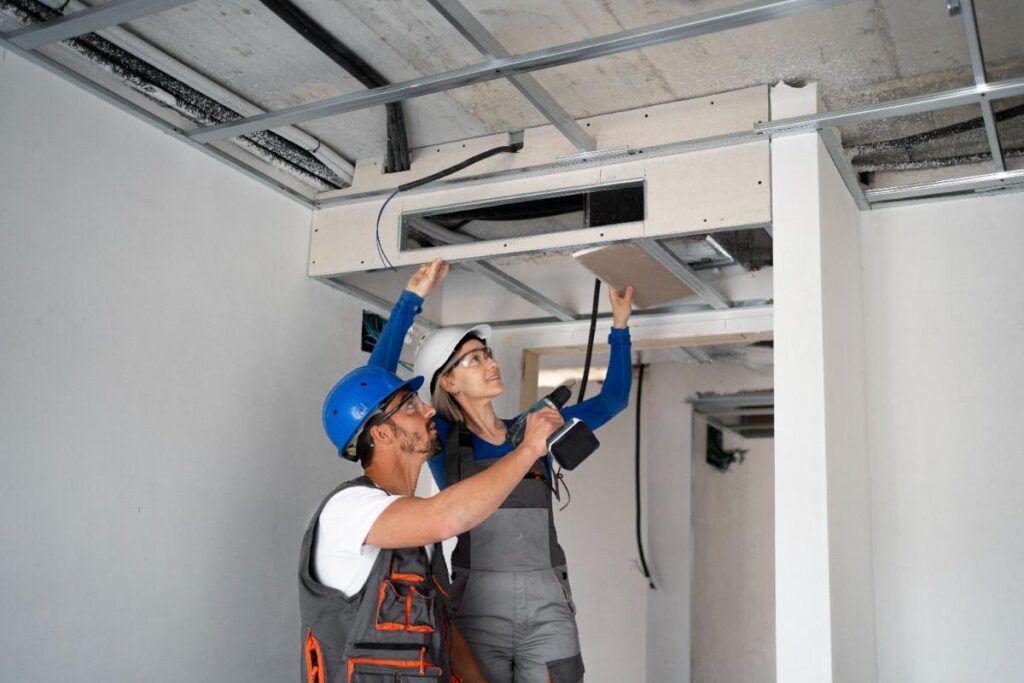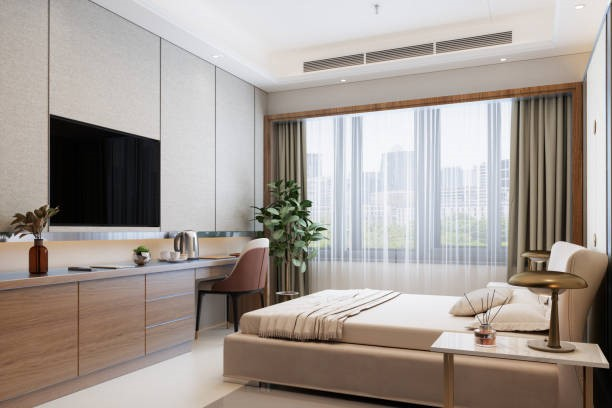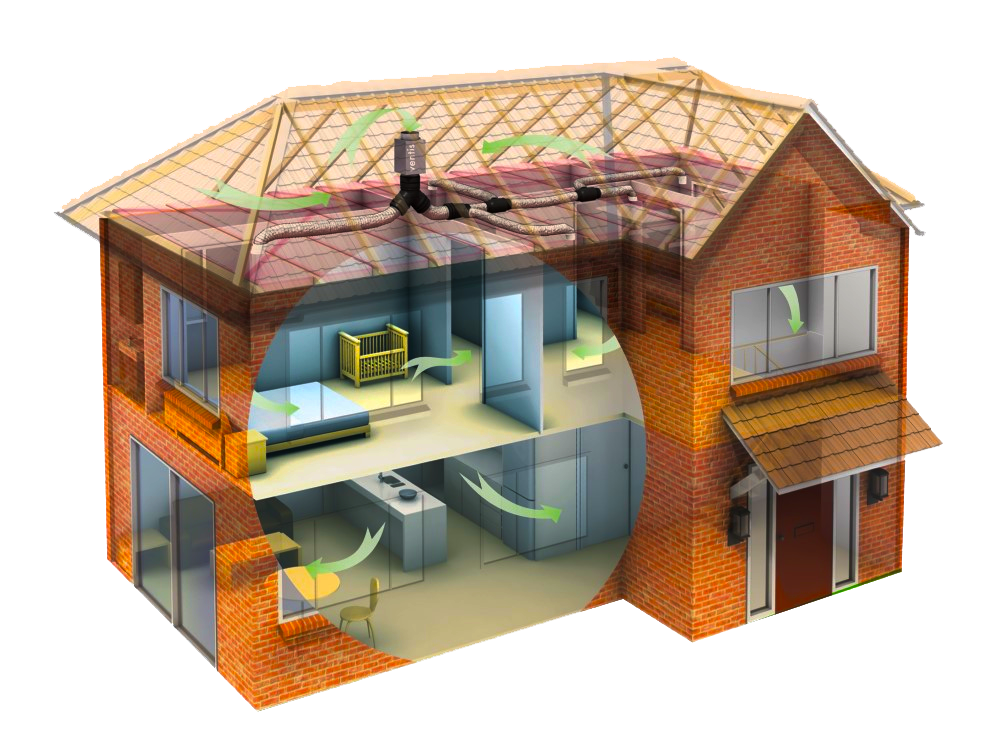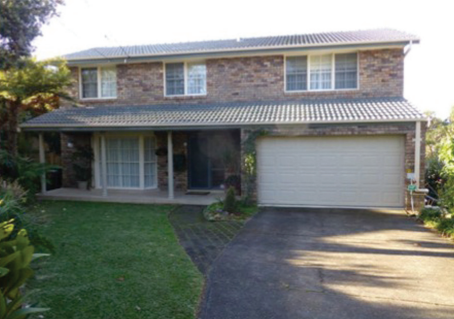
Case Study Overview
Location:
Killarney Heights, Sydney
House Type:
Double-story, double brick
Roof:
Grey tile, East-West orientation
Insulation:
Ceiling and wall insulation
Test Duration:
16th May – 30th May 2012
Test Setup:
System on for 1 week,
system off for 1 week
Outlets:
6
Introduction
In May 2012, a field evaluation was conducted to assess the impact of the Ventis Home Ventilation System on indoor air quality and overall home comfort in a Killarney Heights property. The test lasted for two weeks, during which the Ventis system was turned on for the first week and off for the second week. The house remained unoccupied throughout the test period, ensuring no artificial heating or cooling systems influenced the results.
Test Setup & Methodology
The home, a double-story brick construction with ceiling and wall insulation, was ideal for testing the Ventis system’s ability to maintain a comfortable internal environment in a typical Australian home. The system was evaluated under real-world conditions, without any intervention from external temperature controls. During the test:
- Week 1: Ventis system running, actively circulating fresh air into the home.
- Week 2: Ventis system turned off, allowing natural ventilation to take its course.
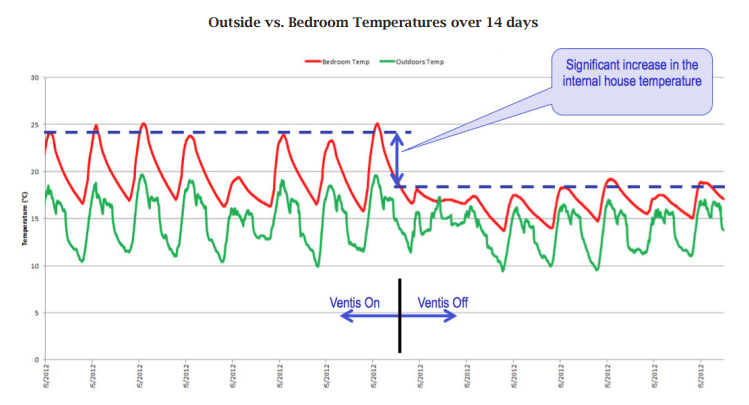
Results: Humidity and Temperature Comparison
Humidity Decrease Achieved with Ventis System On
One of the key outcomes of this evaluation was a noticeable decrease in internal humidity when the Ventis system was operational. By drawing fresh air from outside, the system helped reduce internal moisture levels, providing a more comfortable living environment.
Temperature Analysis
The graph below illustrates the impact of the Ventis system on internal temperatures compared to outdoor conditions over the two-week period:
- Week 1 (Ventis system on): The internal temperature remained cooler, staying within 6 degrees of the external temperature, making the indoor environment more comfortable.
- Week 2 (Ventis system off): Without the Ventis system, the internal temperature rose by up to 6 degrees, highlighting the significant cooling effect the system provides.
Conclusion: Improved Comfort and Air Quality
The two-week test demonstrated the effectiveness of the Ventis Home Ventilation System in improving air quality and temperature regulation in a home setting. When the system was operational, the house maintained a comfortable internal temperature and experienced lower humidity levels. When turned off, the internal temperature rose and humidity levels increased, emphasizing the importance of a continuous, fresh air exchange.
This case study confirms that the Ventis system is an effective solution for homeowners looking to enhance indoor air quality, maintain comfort, and optimize ventilation in both new and existing homes.

